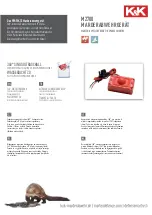
GP-PWM-30-UL
_________________________________________________________________________________
26
© 2018 GoPower!
11.0 Frequently Asked Questions
(FAQs)
Before a problem is suspected with the system, read this section. There
are numerous events that may appear as problems but are in fact
perfectly normal. Please visit
gpelectric.com
for the most up-to-date
FAQs.
It seems like my flooded batteries are losing water over time.
Flooded batteries may need to have distilled water added periodically to
replace fluid loss during charging. Excessive water loss during a short
period of time indicates the possibility of overcharging or aging batteries.
When charging, my flooded batteries are emitting gas.
During charging, hydrogen gas is generated within the battery. The gas
bubbles stir the battery acid allowing it to receive a fuller state of charge.
Important:
Ensure batteries are in a well-ventilated space.
My voltmeter shows a different reading than the GP-PWM-30-UL
display
The meter value on the GP-PWM-30-UL display is an approximate
reading intended for indication purposes only. There is an approximate
0.1 VDC inherent error present that may be accentuated when compared
with readings from another voltmeter.
There may be a slight difference between the battery voltage displayed
on the GP-PWM-30-UL display and the battery voltage measured at the
battery terminals. When troubleshooting using a voltmeter, check both
the battery voltage at the GP-PWM-30-UL controller terminals and
battery voltage at the battery terminals. If a difference of more than 0.5
VDC is noted, this indicates a large voltage drop possibly caused by
loose connections, long wire runs, small wire gauge, faulty wiring, a
faulty voltmeter or all the above. Consult the Suggested Minimum Wire
Gauge chart in
Section 5
for wiring suggestions and check all
connections.
For advanced users:
The GP-PWM-30-UL makes voltage measurement adjustments based
on resistance it detects at the battery terminals. In addition to resistance
in the wires, batteries also have an internal resistance due to chemical
properties. The controller cannot distinguish between these two sources
of resistance. It will compensate up to 250mV in the displayed value.









































